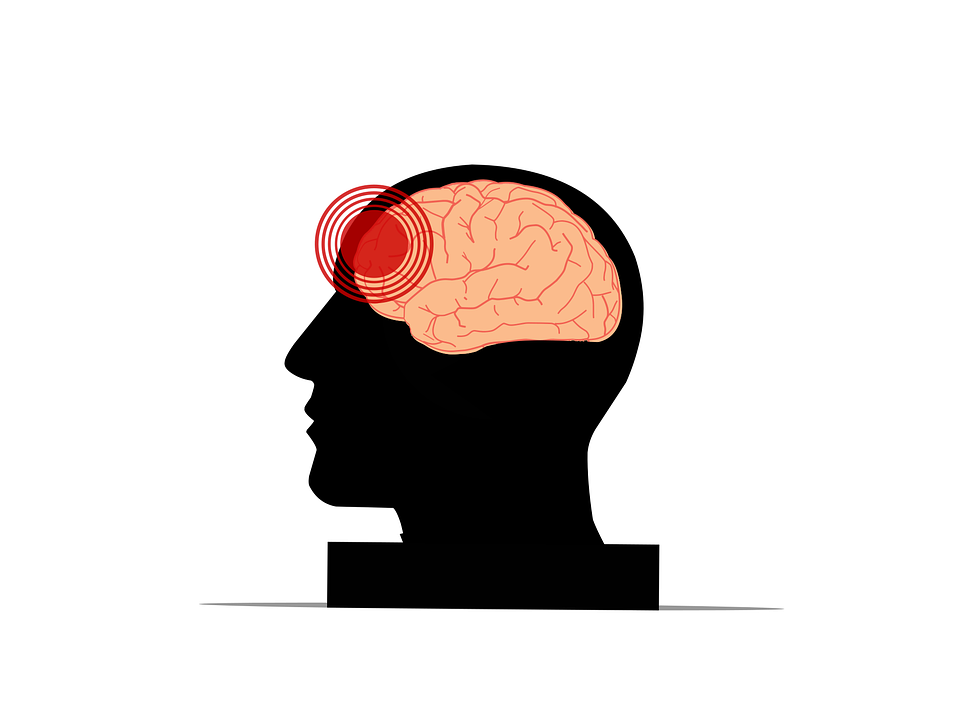
Powerful effects of journaling: How can it help you in your journey of healing, despite dealing with severe anxiety! Probable answers to challenging mental health condition!
Journaling has long been recognized as a therapeutic tool for managing emotions, reducing stress, and fostering self-awareness. For individuals experiencing severe anxiety, writing in a journal can serve as an effective coping mechanism. This article explores how journaling aids in the healing process, supports mental health, and provides practical strategies for incorporating journaling into a daily routine.
How Journaling Supports Healing
- Emotional Release and Processing
- Writing about anxious thoughts helps externalize emotions rather than suppress them.
- Journaling allows individuals to identify patterns and triggers that contribute to their anxiety.
- Expressive writing can lead to emotional catharsis, helping to reduce stress and tension.
- Cognitive Restructuring
- Journaling provides an opportunity to challenge negative thoughts and replace them with more rational perspectives.
- It supports cognitive-behavioral therapy (CBT) techniques by helping individuals recognize cognitive distortions.
- Through self-reflection, individuals develop greater self-awareness and resilience.
- Mindfulness and Present-Moment Awareness
- Journaling encourages mindfulness by focusing on the present experience rather than ruminating on the past or worrying about the future.
- Keeping a gratitude journal shifts focus from anxiety-provoking thoughts to positive aspects of life.
- Writing about small victories fosters a sense of accomplishment and self-compassion.
- Tracking Progress and Growth
- Reviewing past journal entries reveals patterns of progress in managing anxiety.
- Seeing improvements over time builds confidence in one’s ability to cope.
- Journaling acts as a form of self-accountability, reinforcing positive habits and coping strategies.
- Reducing the Impact of Trauma and Stress
- Expressive writing has been shown to help individuals process traumatic experiences in a structured manner.
- Writing about difficult emotions provides a sense of control over anxiety-inducing situations.
- Studies indicate that journaling can lower cortisol levels and improve emotional regulation.
Practical Journaling Techniques for Anxiety Relief
- Stream-of-Consciousness Writing
- Write without judgment or structure, allowing thoughts to flow freely.
- Set a timer for 10-15 minutes and write whatever comes to mind.
- Gratitude Journaling
- List three things you’re grateful for each day.
- Reflect on how these positive aspects contribute to your well-being.
- Cognitive Behavioral Journaling
- Identify an anxious thought, analyze its accuracy, and reframe it with a more balanced perspective.
- Use prompts such as “What evidence supports this fear? What is an alternative way to view this situation?”
- Letter Writing
- Write a letter to your future self about how you overcame challenges.
- Compose a letter to your anxiety, acknowledging its presence but asserting control over your responses.
- Mood and Thought Tracking
- Keep a daily log of your mood, triggers, and coping mechanisms.
- Identify patterns in thought processes and emotional responses.
Probable Answers to Challenging Mental Health Conditions related to anxiety base psychological distress.
- What if journaling increases my anxiety?
- If writing about distressing events feels overwhelming, try guided prompts or limit writing sessions to short, manageable durations.
- Focus on positive aspects such as gratitude, solutions, and strengths rather than only venting.
- How do I stay consistent with journaling?
- Set aside a specific time daily, such as before bed or after waking up.
- Use a structured format, like bullet points, if long-form writing feels daunting.
- Can journaling replace therapy?
- While journaling is a valuable self-help tool, it should complement professional therapy rather than replace it.
- Sharing journal entries with a therapist can provide deeper insights and guided support.
- How long will it take of me journaling before I see a positive difference with my anxiety?
- Journaling alone may not be the ultimate solution to overcoming anxiety. Managing anxiety effectively requires a combination of therapy, time, and personal effort. Each individual responds differently to the benefits of journaling—some may notice improvements within six months, while others may take longer. There is no definitive medical evidence indicating a specific timeframe for complete recovery from anxiety-related challenges.
Journaling is a powerful practice that fosters healing and resilience, especially for those struggling with severe anxiety. By providing a safe space for emotional expression, cognitive restructuring, and mindfulness, journaling can transform one’s mental health journey. Whether used alongside therapy or as a personal tool for self-growth, its benefits are profound and long-lasting.


Breaking the Silence: Depression in Men and the Role of Cognitive Behavioral Psychotherapy to assist them into better mental health
Depression is often perceived as a condition that affects women more than men. However, this misconception is rooted in societal expectations and gender norms that discourage men from expressing vulnerability. The reality is that depression in men is widespread yet underreported due to stigma, fear, and a reluctance to seek help. Many men suffer in silence, leading to severe consequences such as substance abuse, relationship breakdowns, and even suicide. Cognitive Behavioral Psychotherapy (CBT) provides a structured and effective approach to addressing male depression, challenging negative thought patterns, and fostering openness to mental health support.
Understanding Male Depression and long term impact on their mental health.
Men experience depression differently than women. While women are more likely to exhibit sadness, tearfulness, and verbal expression of distress, men often display anger, irritability, risk-taking behaviors, and withdrawal from social connections. This difference in symptom expression can make depression in men harder to diagnose and easier to dismiss as mere stress or mood swings.
Common signs of depression in men include:
- Increased irritability and aggression
- Difficulty sleeping or excessive sleep
- Loss of interest in work, hobbies, and relationships
- Chronic fatigue or low energy levels
- Increased use of alcohol or drugs as coping mechanisms
- Feelings of hopelessness, worthlessness, or persistent sadness
- Suicidal thoughts or self-harming behaviors
Despite these symptoms, many men resist seeking help due to cultural and psychological barriers. Societal expectations condition men to suppress emotions, viewing the acknowledgment of mental distress as a sign of weakness. This reluctance to seek professional assistance often leads to prolonged suffering and worsened outcomes.
The Role of Cognitive Behavioral Psychotherapy (CBT)
Cognitive Behavioral Psychotherapy (CBT) is one of the most effective and widely used therapeutic approaches for treating depression. It focuses on identifying and modifying negative thought patterns and behaviors that contribute to emotional distress. For men struggling with depression, CBT offers several key benefits:
1. Breaking Down the Mental Barriers
CBT helps men recognize the connection between their thoughts, emotions, and behaviors. Many men with depression engage in cognitive distortions, such as black-and-white thinking (“I’m a failure at everything”) or catastrophizing (“Things will never get better”). Through CBT, they learn to challenge these distortions and replace them with more balanced, realistic thoughts.
2. Encouraging Emotional Expression
One of the major obstacles to treating male depression is the difficulty in articulating emotions. CBT provides a structured environment where men can explore their feelings without judgment. Therapists help them develop a vocabulary for their emotions, making it easier to express distress in healthy ways rather than through anger or avoidance.
3. Developing Healthier Coping Mechanisms
Men often resort to unhealthy coping mechanisms such as alcohol consumption, overworking, or engaging in reckless behavior. CBT teaches alternative strategies such as mindfulness, relaxation techniques, and constructive problem-solving, helping them replace self-destructive habits with healthier approaches.
4. Improving Problem-Solving Skills
Men with depression often feel overwhelmed by life’s challenges and perceive problems as insurmountable. CBT equips them with problem-solving skills that allow them to break down issues into manageable steps, reducing feelings of helplessness and increasing self-efficacy.
5. Building Stronger Relationships
Depression often strains personal and professional relationships. CBT helps men develop better communication skills, fostering stronger connections with loved ones. Learning to express emotions and needs effectively can improve relationships and create a support system that is crucial for recovery.
Why Men Need to Break the Silence
The stigma surrounding male depression can have devastating consequences. Statistics show that men are significantly more likely to die by suicide than women, with undiagnosed and untreated depression being a major contributing factor. By raising awareness and encouraging open discussions, society can create an environment where men feel safe to seek help without fear of judgment.
Additionally, workplaces, schools, and healthcare providers must play a role in normalizing mental health conversations. Employee assistance programs, mental health workshops, and routine mental health screenings can make a difference in identifying and addressing depression early.
Depression in men is a critical yet often overlooked issue. The societal expectation for men to be emotionally resilient and self-sufficient contributes to their reluctance to seek help. Cognitive Behavioral Psychotherapy offers a practical and effective solution, equipping men with the tools to recognize, challenge, and modify depressive thought patterns. By breaking the silence and fostering an environment of acceptance and understanding, we can encourage more men to embrace therapy and embark on the path to recovery. The key to healing lies in acknowledging that seeking help is not a sign of weakness, but a courageous step toward a healthier, more fulfilling life.


Strengthening Resilience: Several effective strategies to protect your mental health from the many downsides of anxiety disorder
Anxiety is a natural reaction to stress, but when it becomes persistent or overwhelming, it can take a toll on both mental and physical health. Strengthening resilience is key to managing anxiety and fostering a healthy, balanced mind. Resilience doesn’t mean avoiding stress—it’s about developing the ability to adapt and bounce back from life’s challenges.
This article explores several effective strategies to build resilience and protect mental well-being from the effects of anxiety disorder. Keep in mind that not every approach will work for everyone, but by gaining insight and understanding, you may discover techniques that suit you best. Let’s explore them one by one.
1. Develop a Growth Mindset
A growth mindset is the belief that abilities and intelligence can be developed through dedication and hard work. Viewing challenges as opportunities to grow rather than threats can shift your perspective and reduce anxiety. Embrace setbacks as learning experiences, and remind yourself that difficulties are temporary and surmountable.
2. Practice Mindfulness and Meditation
Mindfulness involves focusing on the present moment without judgment. Regular mindfulness practice can help reduce anxiety by shifting attention away from distressing thoughts and fostering a sense of calm. Meditation, deep breathing, and body scanning techniques can further support emotional regulation and stress management.
3. Prioritize Self-Care
Taking care of your body and mind is crucial in strengthening resilience. Ensure you get adequate sleep, maintain a balanced diet, and engage in regular physical activity. Exercise, in particular, has been shown to reduce anxiety by releasing endorphins and improving mood. Additionally, engaging in activities that bring joy and relaxation, such as hobbies or spending time in nature, can contribute to overall mental well-being.
4. Build a Strong Support System
Having supportive relationships can significantly buffer the effects of anxiety. Surround yourself with positive and understanding individuals who encourage resilience. Whether through family, friends, support groups, or therapy, meaningful connections provide comfort and guidance during stressful times.
5. Cultivate Emotional Regulation Skills
Managing emotions effectively can prevent anxiety from escalating. Techniques such as journaling, cognitive reframing, and engaging in creative outlets like art or music can help process emotions in a healthy way. Identifying triggers and developing coping mechanisms tailored to your needs can also enhance emotional resilience.
6. Establish Healthy Boundaries
Setting boundaries is essential for maintaining mental health and preventing burnout. Learn to say no to demands that exceed your emotional or physical capacity. Prioritize activities that align with your well-being, and avoid situations or individuals that contribute to unnecessary stress.
7. Develop Problem-Solving Skills
Resilience involves facing problems head-on rather than avoiding them. Strengthen your problem-solving skills by breaking challenges into manageable steps. Identify possible solutions, weigh their pros and cons, and take action. Feeling in control of situations can reduce anxiety and enhance confidence in handling future stressors.
8. Seek Professional Help When Needed
There is no shame in seeking professional support when anxiety becomes overwhelming. Therapy, counseling, or psychiatric intervention can provide tailored strategies and coping mechanisms. Cognitive-behavioral therapy (CBT), in particular, has proven effective in reducing anxiety symptoms and improving resilience.
Building resilience against anxiety disorder requires consistent effort and self-awareness. By fostering a growth mindset, practicing mindfulness, prioritizing self-care, and seeking support, you can strengthen your mental health and navigate life’s challenges with confidence. Remember, resilience is not about eliminating stress but about developing the capacity to adapt, recover, and thrive


The harmful impact of jealousy in relationships: How to address it effectively without allowing it to undermine the emotional bond with your partner. Effective long term strategies for building trust and connection.
Jealousy is a natural emotion, but when it becomes excessive or unchecked, it can cause significant harm to relationships. It can erode trust, create distance, and damage the emotional connection between partners.
Social media often amplifies jealousy in relationships by creating unrealistic comparisons and fostering insecurity. Platforms like Instagram or Facebook showcase idealized versions of people’s lives, including interactions with others, which can make a partner feel inadequate or excluded. Seeing your significant other interact with others, such as liking photos, commenting, or sharing posts, can trigger feelings of suspicion or fear of infidelity, even if there’s no real basis for concern.
Social media also blurs boundaries, making it easier to reconnect with exes or strangers, which can provoke jealousy. The constant connectivity can create pressure to monitor a partner’s activities, leading to unhealthy behaviors like checking their profiles or messages for signs of betrayal.
Algorithms that highlight attractive or engaging content can fuel insecurities, especially if one partner notices their significant other engaging with such posts. Additionally, vague or ambiguous online interactions—like cryptic comments or tagged photos—can lead to overthinking and misinterpretation.
The curated, highlight-reel nature of social media fosters unhealthy comparisons. Partners may feel they or their relationship falls short compared to the perfect couples portrayed online. Over time, this can erode self-esteem and trust, making jealousy more prevalent.When not addressed openly, these emotions can deepen and lead to unnecessary conflict, further harming the relationship.
Understanding how to address jealousy effectively is essential for maintaining a healthy and fulfilling relationship. Here, we explore the harmful effects of jealousy, strategies to manage it, and long-term approaches to building trust and connection.
Understanding the Harmful Effects of Jealousy
Jealousy often stems from insecurity, fear of abandonment, or past experiences of betrayal. While occasional jealousy is normal, chronic or intense jealousy can lead to:
- Erosion of Trust: Constant accusations or doubts can make your partner feel untrusted, even if they’ve done nothing wrong.
- Emotional Distance: Jealousy often leads to controlling behaviors or frequent conflicts, which push partners apart emotionally.
- Reduced Self-Esteem: Both the jealous partner and their significant other can experience diminished self-worth due to ongoing tension and negativity.
- Communication Breakdowns: Jealousy can create an environment where honest and open communication becomes difficult, further straining the relationship.
- Toxic Dynamics: Over time, unchecked jealousy can lead to manipulative or abusive behaviors, creating an unhealthy relationship dynamic.
Short-Term Strategies to Address Jealousy
1. Self-Reflection
- Take time to identify the root causes of your jealousy. Are these feelings tied to past experiences, personal insecurities, or current behaviors in your relationship?
- Journaling or speaking with a trusted friend or therapist can help clarify these emotions.
2. Communicate Openly
- Share your feelings with your partner in a non-confrontational way. Use “I” statements, such as, “I feel insecure when…” rather than “You make me feel…”
- Ask your partner for reassurance or clarification instead of making accusations.
3. Practice Emotional Regulation
- When jealousy arises, pause and take deep breaths to calm yourself.
- Challenge irrational thoughts by asking yourself, “What evidence do I have for this feeling?”
4. Set Boundaries
- Discuss and agree on boundaries that feel fair to both partners. These could include healthy ways to maintain transparency, such as open communication about friendships or social activities.
5. Focus on Gratitude
- Redirect your energy toward appreciating the positive aspects of your relationship. Recognizing what’s working well can help counteract negative feelings.
Long-Term Strategies for Building Trust and Connection
1. Foster Emotional Security
- Build a safe environment where both partners feel valued and understood.
- Regularly affirm your love and commitment to each other through words and actions.
2. Strengthen Self-Esteem
- Work on your self-confidence by pursuing personal goals, hobbies, or interests. A strong sense of self can reduce dependency on external validation.
- Encourage your partner to do the same, creating a dynamic where both partners feel secure and independent.
3. Develop Transparent Communication
- Make honesty a cornerstone of your relationship. This includes being upfront about feelings, concerns, and expectations.
- Schedule regular check-ins to discuss how you’re feeling and address any underlying issues before they escalate.
4. Reframe Jealousy as an Opportunity
- Instead of viewing jealousy as a threat, see it as a signal for areas that need attention. For example, if jealousy arises from a lack of time spent together, work to prioritize quality moments as a couple.
5. Seek Professional Support
- If jealousy persists or becomes overwhelming, consider couples counseling or individual therapy. A trained professional can help identify patterns and provide tools to address them effectively.
Practical Exercises to Strengthen Trust
- Trust-Building Activities:
- Share a new experience together, like trying a new hobby or taking a trip. These activities can strengthen your bond and create positive memories.
- Daily Check-Ins:
- Spend a few minutes each day sharing highs and lows with each other. This practice fosters connection and openness.
- Gratitude Lists:
- Write down three things you appreciate about your partner each day and share them. This simple habit reinforces positive feelings.
- Reassurance Rituals:
- Develop small rituals that provide comfort and security, such as a goodnight text or a hug before leaving for work.
Jealousy doesn’t have to define or destroy your relationship. By understanding its root causes and implementing strategies to manage it, you can prevent it from undermining your emotional connection. Building trust and fostering open communication are the cornerstones of a healthy partnership. When combined with gratitude, self-awareness, and intentional effort, these approaches can lead to a relationship that thrives on mutual respect, understanding, and love.


Building emotional intimacy after the spark is gone. The many struggles couples face in the 21st century! Finding effective strategies that can work when putting in the effort!
Emotional intimacy is the bedrock of a healthy, long-lasting relationship. It goes beyond physical attraction and shared interests; it’s about vulnerability, trust, and deep emotional connection. However, in today’s fast-paced and tech-driven world, many couples face significant challenges maintaining this connection, especially when the initial “spark” fades. The good news is that emotional intimacy can be rebuilt with effort, understanding, and the right strategies.
Why Emotional Intimacy Fades
Before delving into solutions, it’s important to understand why emotional intimacy wanes over time. Some common factors include:
- Life Stressors: Careers, parenting, financial pressures, and health challenges often take precedence, leaving little energy for connection.
- Technology Overload: Constant connectivity to devices can lead to disconnection from partners.
- Unrealistic Expectations: Social media often paints an unrealistic picture of relationships, leading to disappointment when real life doesn’t match up.
- Routine and Complacency: Over time, couples may fall into predictable patterns, losing the excitement and novelty that fueled the early days of their relationship.
- Lack of Communication: Misunderstandings, unresolved conflicts, or simply not sharing thoughts and feelings can create emotional distance.
While these challenges are common, they are not insurmountable. By understanding the struggles and committing to change, couples can rebuild and even strengthen their bond.
Strategies for Rebuilding Emotional Intimacy
- Prioritize Quality Time
- Life gets busy, but carving out time to connect is essential. Schedule regular date nights or “technology-free” evenings where you can focus solely on each other. Even small gestures, like having coffee together in the morning, can make a big difference.
- Practice Open and Honest Communication
- Share your thoughts, fears, and dreams openly with your partner. Active listening—being present and genuinely interested in what they’re saying—is just as important. Avoid interrupting or dismissing their feelings.
- Rekindle Physical Affection
- Physical touch can reignite emotional closeness. Simple acts like holding hands, hugging, or cuddling release oxytocin, the “bonding hormone.” Intimacy doesn’t always have to lead to sex; sometimes, the act of touch itself can be healing.
- Show Appreciation
- Over time, it’s easy to take your partner for granted. Make a habit of expressing gratitude for the little things they do. A heartfelt “thank you” or a note of appreciation can go a long way in making your partner feel valued.
- Engage in New Experiences Together
- Novelty can reignite excitement in a relationship. Try a new hobby, travel to an unfamiliar destination, or take a cooking class together. Shared experiences create lasting memories and deepen your bond.
- Seek Professional Help When Needed
- Sometimes, unresolved conflicts or deep-seated issues require the guidance of a therapist. Couples therapy can provide a safe space to explore feelings and learn effective communication and conflict-resolution skills.
- Reconnect Through Shared Goals
- Setting goals as a couple—whether it’s saving for a home, starting a business, or adopting a healthier lifestyle—can strengthen your partnership. Working together toward a common purpose fosters teamwork and emotional closeness.
- Rediscover Each Other
- People change over time, and so do relationships. Take the time to “date” your partner again. Ask questions about their current dreams, challenges, and interests. Relearning who they are now can reignite your curiosity and admiration for them.
- Focus on Self-Improvement
- A healthy relationship starts with healthy individuals. Work on your own emotional well-being through mindfulness, self-care, or therapy. When you feel fulfilled as an individual, you’re better equipped to show up for your partner.
- Develop Rituals of Connection
- Rituals create consistency and a sense of security in a relationship. This could be as simple as a goodnight kiss, a weekly walk, or a “check-in” conversation where you each share your highs and lows of the day.
Navigating Modern Challenges
Couples in the 21st century face unique challenges that require modern solutions. Here’s how to address some of them:
- Technology: Set boundaries for screen time, such as no phones during meals or in the bedroom. Use technology to connect rather than disconnect—send loving messages or photos to remind your partner you’re thinking of them.
- Busy Schedules: If finding time is difficult, integrate connection into your daily routine. Talk during your commute, exercise together, or share a chore to maximize time spent together.
- Social Media Pressures: Avoid comparing your relationship to others’ curated online lives. Focus on what works for you as a couple and celebrate your unique journey.
The power of effort and consistency.
Rebuilding emotional intimacy takes intentional effort from both partners. It’s not about fixing the relationship overnight but committing to small, consistent actions that nurture connection over time. Remember, the “spark” is just the beginning of a relationship—true intimacy is built in the everyday moments of understanding, patience, and love.
When both partners are willing to put in the work, even the most disconnected relationships can transform into deeply fulfilling partnerships. The journey to emotional intimacy is not without its challenges, but the rewards—a deeper connection, greater trust, and enduring love—are worth every step.
As long as there is no emotional or physical abuse, any relationship can be repaired if both partners are fully committed to making it work. If you’ve both put in the effort and still haven’t succeeded, you can move forward confidently, knowing you gave it your all without regret. While investing time and energy is crucial, forcing a relationship to continue may not always be the wisest choice, even when young children are part of the equation.


Complexities of S.A.D (Seasonal Affective Disorders): Coping with mood disorders related to winters and cold temperatures. Effective Strategies that can work during these long winter months to alleviate these moods.
Seasonal Affective Disorder (SAD) is a type of mood disorder that recurs seasonally, often in winter when daylight hours are reduced. The symptoms of SAD are similar to those of major depressive disorder and may include persistent low mood, fatigue, irritability, sleep problems, overeating, and social withdrawal. Those affected by SAD can find it difficult to maintain motivation and experience a general decline in well-being.
Here’s a detailed exploration of SAD, the science behind it, and effective strategies for coping during the winter months.
1. Understanding SAD: Causes and Biological Mechanisms
- Light and Melatonin Regulation: Reduced sunlight in winter affects our circadian rhythms, which are regulated by light. This can lead to overproduction of melatonin, the hormone that regulates sleep, causing drowsiness and lethargy during waking hours.
- Serotonin Production: Low sunlight exposure may lower serotonin levels in the brain. This neurotransmitter is crucial for mood stabilization, and lower levels can lead to feelings of depression and lethargy.
- Vitamin D Deficiency: Sunlight exposure is a primary source of vitamin D. Low levels of vitamin D have been linked to depressive symptoms, and insufficient sunlight during winter can contribute to this deficiency.
- Genetic Factors: Some people are more genetically predisposed to experience SAD due to a family history of mood disorders or particular serotonin-transporter genes.
2. Symptoms of SAD
- Persistent low mood
- Loss of interest or pleasure in everyday activities
- Fatigue and low energy despite adequate sleep
- Increased appetite, particularly for carbohydrates, leading to weight gain
- Difficulty concentrating and making decisions
- Social withdrawal and increased irritability
- In severe cases, thoughts of self-harm or suicide may occur.
3. Effective Strategies for Managing SAD Symptoms
3.1. Light Therapy (Phototherapy)
- What It Is: Light therapy involves exposure to a bright light (at least 10,000 lux) that mimics natural sunlight. This is usually done with a lightbox for 20-60 minutes each morning.
- How It Helps: Light therapy can help realign circadian rhythms and reduce melatonin production, improving alertness and mood.
- Effectiveness: Studies suggest light therapy can improve symptoms in up to 85% of people with SAD within a week or two.
3.2. Cognitive Behavioral Therapy (CBT)
- What It Is: CBT is a structured, short-term form of psychotherapy focused on identifying and changing negative thought patterns.
- How It Helps: CBT helps individuals challenge and alter negative thoughts related to the season, breaking the connection between dark days and feelings of hopelessness.
- Effectiveness: Research has found CBT tailored for SAD (CBT-SAD) to be effective in reducing symptoms both in the short term and in preventing recurrence.
3.3. Physical Exercise
- Why It Works: Exercise releases endorphins, which act as natural mood lifters. Regular physical activity also improves sleep, reduces anxiety, and provides structure to daily routines.
- Types of Exercise: Aerobic exercises such as walking, cycling, and swimming are particularly beneficial. Exercising outdoors, even on cloudy days, can also provide natural light exposure.
3.4. Diet and Nutrition
- Avoiding Carbohydrate Cravings: SAD often leads to an increased craving for carbohydrates. A balanced diet with complex carbohydrates (whole grains) and protein-rich foods can stabilize blood sugar levels and mood.
- Supplementing with Vitamin D: Because sunlight exposure is limited in winter, taking a vitamin D supplement can help mitigate deficiency-related mood dips.
- Omega-3 Fatty Acids: Found in fish and flaxseed, omega-3s are known to support brain health and reduce symptoms of depression.
3.5. Social Connection and Support
- Importance of Social Engagement: Social withdrawal is common with SAD, but engaging with friends and family can significantly alleviate symptoms. Support groups and social gatherings provide emotional support and combat isolation.
- Therapeutic Support Groups: Group therapy sessions tailored to individuals with SAD can be a valuable resource, as members share coping strategies and provide mutual encouragement.
3.6. Mindfulness and Relaxation Techniques
- Mindfulness Practices: Meditation and mindfulness exercises help to reduce stress and improve focus, helping individuals maintain resilience against mood fluctuations.
- Guided Relaxation: Techniques such as deep breathing and progressive muscle relaxation can help manage anxiety and improve mood during winter.
3.7. Structured Daily Routine
- Benefits: Establishing a consistent routine helps create structure in days that may otherwise feel directionless and gloomy.
- Morning Sunlight Exposure: Maximize exposure to natural sunlight by scheduling outdoor activities during daylight hours, especially in the morning.
- Sleep Hygiene: Setting regular wake-up and bedtime hours, avoiding caffeine in the afternoon, and limiting blue light exposure before bed can improve sleep quality, which is essential for managing SAD symptoms.
3.8. Medication
- SSRIs: Selective serotonin reuptake inhibitors (SSRIs) are commonly prescribed for SAD when symptoms are severe or unresponsive to other treatments. These medications increase serotonin levels, helping to elevate mood and reduce anxiety.
- Bupropion (Wellbutrin): The FDA has approved this antidepressant specifically for treating SAD, particularly for its ability to prevent relapse.
4. Preventative Strategies for SAD
- Early Light Therapy: Beginning light therapy sessions in early fall before symptoms fully set in can help reduce the severity of SAD.
- Psychotherapy: Regular CBT sessions can build resilience to manage negative thoughts and prevent worsening of symptoms.
- Active Lifestyle: Maintaining an active lifestyle year-round, including outdoor time and physical exercise, can reduce the impact of winter on mood.
5. Importance of Early Diagnosis and Individualized Treatment
- Early diagnosis and a personalized approach are essential since SAD manifests differently across individuals. Some people respond better to light therapy, while others might need a combination of therapies and medications.
SAD is a complex disorder that arises from a blend of biological, psychological, and environmental factors. By combining lifestyle adjustments with therapeutic interventions like light therapy, CBT, and possibly medication, individuals can manage their symptoms and maintain a higher quality of life throughout the winter months.
Learn More
The Dire challenge of overthinking everything: Strategies to minimize the impact on your mental health when dealing with obsessive and rapid thoughts.
Overthinking, also known as rumination or obsessive thought, involves repeatedly dwelling on past events or excessively worrying about future possibilities, often leading to mental exhaustion and anxiety. This pattern can be highly disruptive to mental health and is linked to various issues, including stress, depression, and insomnia. Addressing the challenge of overthinking and learning strategies to manage rapid thoughts is crucial for maintaining emotional well-being and mental clarity.
Understanding the Impact of Overthinking on Mental Health
Overthinking can have a significant impact on mental health, often resulting in the following issues:
- Anxiety and Stress: Overthinking causes constant worry, often leading to increased anxiety and a heightened sense of stress. People who overthink are more likely to anticipate worst-case scenarios, which can create a constant state of tension.
- Depression: Persistent rumination is strongly associated with depression, as individuals continuously replay negative experiences or worry excessively about potential outcomes. This cycle can reinforce negative emotions, worsening feelings of helplessness and sadness.
- Sleep Disturbances: Overthinkers often struggle to relax their minds, making it difficult to fall asleep or stay asleep. Poor sleep further exacerbates stress and anxiety, creating a vicious cycle that’s hard to break.
- Decision-Making Paralysis: People who overthink may become overwhelmed by the decision-making process, analyzing all possible options and outcomes to the point where making a choice feels impossible. This can lead to missed opportunities and increased frustration.
- Physical Health Issues: Chronic overthinking is associated with physical symptoms such as headaches, muscle tension, fatigue, and digestive issues. This is because constant worry activates the body’s stress response, which can lead to longer-term health problems.
Why Do People Overthink?
Understanding the root causes of overthinking can help in identifying strategies to address it. Some common triggers and contributing factors include:
- Fear of Failure: Overthinkers often fear making mistakes or not achieving their goals, leading them to scrutinize every possible outcome.
- Perfectionism: People who have high standards for themselves may overanalyze their actions to ensure everything is done “perfectly.”
- Negative Self-Talk: Low self-esteem and negative thoughts about oneself can lead to a cycle of self-criticism and overthinking.
- Trauma or Past Experiences: Negative past experiences can lead individuals to replay situations in their minds, attempting to understand or find closure.
- Uncertainty and Lack of Control: Overthinkers often feel a need to control situations or outcomes, leading them to obsess over details and scenarios.
Strategies to Minimize the Impact of Overthinking on Mental Health
Fortunately, there are several effective strategies for managing overthinking and minimizing its impact on mental health:
1. Practice Mindfulness
Mindfulness is the practice of staying present and aware of the current moment. It helps to break the cycle of overthinking by redirecting attention away from worries about the past or future. Techniques include:
- Breathing Exercises: Focusing on deep, slow breathing can calm the nervous system and create a sense of grounding.
- Body Scanning: Paying attention to physical sensations can help individuals stay connected to the present moment.
- Mindful Meditation: Engaging in meditation for even a few minutes daily can reduce overthinking by training the mind to focus on the present.
2. Set Time Limits for Decision-Making
One way to curb overthinking is by setting a time limit for making decisions. This can prevent excessive analysis and help people take action without second-guessing themselves.
- 5-Minute Rule: For small decisions, allow yourself only five minutes to make a choice.
- Deadlines for Larger Decisions: For more complex decisions, set a reasonable deadline to limit the time spent analyzing options.
3. Challenge Negative Thoughts
Negative thoughts fuel overthinking, so learning to challenge and reframe them can be helpful. Techniques include:
- Cognitive Behavioral Techniques (CBT): CBT encourages individuals to identify irrational thoughts and replace them with realistic, positive alternatives.
- Positive Affirmations: Repeating positive affirmations can help shift attention away from negative thoughts.
- Evidence Gathering: When a negative thought arises, look for evidence to support or disprove it. This can often reveal that the thought is unfounded or exaggerated.
4. Engage in Physical Activity
Physical activity can reduce overthinking by promoting the release of endorphins, which improve mood and relieve stress. Activities that require focus and coordination, such as yoga or dancing, can be especially effective.
5. Practice Journaling
Writing down thoughts and concerns can be a cathartic way to release them from the mind. Journaling helps to:
- Organize Thoughts: Putting thoughts on paper can make them feel more manageable and less overwhelming.
- Identify Patterns: Regular journaling can reveal recurring thought patterns, making it easier to address and interrupt them.
- Set Goals and Reflect: Use journaling to set achievable goals and reflect on progress, which can help reduce worry and create a sense of accomplishment.
6. Develop a Structured Routine
A structured daily routine can reduce overthinking by providing a sense of order and predictability. It allows individuals to focus on productive tasks rather than getting lost in a cycle of worry.
- Prioritize Tasks: Use a to-do list or planner to outline priorities and deadlines.
- Schedule Breaks: Incorporate regular breaks throughout the day to reset and clear the mind.
- Limit Screen Time: Reducing time spent on social media or news outlets can decrease exposure to stressors that trigger overthinking.
7. Practice Self-Compassion
Self-compassion involves treating oneself with kindness and understanding, especially during challenging times. This can help to minimize self-criticism, which often leads to overthinking.
- Acknowledge Your Efforts: Recognize that perfection isn’t necessary and that everyone makes mistakes.
- Use Gentle Language: Replace harsh self-talk with encouraging and understanding words.
- Forgive Yourself: Let go of past mistakes and remind yourself that personal growth is a continuous journey.
8. Focus on Solutions Instead of Problems
Overthinking often involves fixating on problems without considering solutions. Shifting focus to actionable solutions can empower individuals to take control and reduce worry.
- Action Plan: For each concern, list possible solutions and actionable steps.
- Set Small Goals: Break larger challenges into smaller, manageable tasks.
- Reward Progress: Celebrate small victories along the way to reinforce a positive mindset.
9. Seek Professional Help
If overthinking is significantly affecting mental health and daily functioning, it may be beneficial to seek help from a mental health professional. Therapies such as Cognitive Behavioral Therapy (CBT) and mindfulness-based therapy have proven effective in managing excessive thoughts.
Overthinking is a common issue for the many humans out there but it doesn’t have to control your life. By incorporating mindfulness, physical activity, structured routines, and self-compassion into daily practices, individuals can minimize the impact of overthinking and improve overall mental health. Remember, managing overthinking is a process, and each small step can contribute to a healthier, more balanced mindset.


Dealing with Anxiety Triggers: Managing Relationships with Family Members who trigger our own anxiety: Some suggested steps to take and how to communicate when you feel the need to distance yourself or avoid interaction with them.
Living with anxiety can be challenging on its own, but navigating relationships with family members who trigger that anxiety adds an extra layer of complexity. Unlike casual acquaintances or coworkers, family members are often deeply integrated into your life, making avoidance more difficult and potentially damaging to family bonds. However, there are ways to address these relationships and manage your anxiety while maintaining boundaries and open communication.
This article explores the emotional challenges of interacting with family members who exacerbate anxiety, provides steps to cope, and offers practical advice on how to communicate your needs effectively. Understanding these techniques can help you maintain your mental well-being while minimizing tension within the family.
Understanding How Family Can Trigger Anxiety
Before diving into solutions, it’s essential to identify why family members may provoke feelings of anxiety. These reasons vary greatly depending on personal history, family dynamics, and individual triggers. Some common causes include:
- Unresolved Past Conflicts: Recurring conflicts from the past can leave emotional scars that resurface during interactions.
- Unrealistic Expectations: Families often place expectations on members to behave, achieve, or live up to certain standards, leading to pressure and anxiety.
- Lack of Boundaries: Overly invasive or controlling family members can make one feel suffocated, stripping away a sense of autonomy.
- Emotional Manipulation: Family members who use guilt or emotional manipulation can induce stress and anxiety, creating a toxic atmosphere.
- Family Roles and Dynamics: Traditional family roles or a history of dysfunction may perpetuate toxic dynamics that cause anxiety.
- Frequent Criticism or Judgment: Family members who frequently criticize or judge you can trigger feelings of inadequacy, leading to social anxiety and withdrawal.
Identifying the specific triggers within your family dynamic is crucial. Once you’re aware of these, you can begin addressing them with clear boundaries and communication strategies.
Steps to Take When Dealing with Family-Related Anxiety
When faced with family-induced anxiety, it’s important to approach the situation with care. Rather than impulsively reacting or permanently severing ties, consider these thoughtful steps to manage your mental health and maintain your relationship with your family members:
- Recognize Your Triggers Start by identifying which situations or behaviors from family members trigger your anxiety. Is it certain conversations, comments about your life, or particular family gatherings? Understanding what sets you off can help you take proactive measures to address the issue and plan how to respond before encountering similar situations again.
- Set Healthy Boundaries Once you’ve pinpointed the sources of anxiety, the next step is to set boundaries. Boundaries are crucial for maintaining emotional health, especially with family. Whether it’s limiting the time you spend with them or making certain topics off-limits in conversations, healthy boundaries prevent you from feeling overwhelmed.
For example, if family members often criticize your life choices, politely let them know you won’t entertain discussions on those subjects. You can say, “I appreciate your concern, but I would prefer not to talk about my job or relationships at this time.”
- Limit Exposure to Toxic Situations While it might be impossible to cut off contact with family members completely, reducing your exposure to toxic situations can help. Skip gatherings that make you anxious, or spend less time with people who trigger your anxiety. Focus on protecting your mental health, even if it means saying no to certain events.
- Practice Self-Care Engaging in self-care is crucial to managing anxiety, particularly when dealing with family triggers. This could involve physical activities like yoga or exercise, journaling your emotions, meditating, or simply giving yourself a break from toxic conversations. Self-care isn’t selfish—it’s a necessary part of maintaining your well-being.
- Seek Professional Support If family dynamics are too overwhelming, seeking professional guidance through therapy can be immensely helpful. Therapists can help you process emotions, develop coping strategies, and teach you how to handle difficult family relationships without sacrificing your mental health. Cognitive Behavioral Therapy (CBT) is a particularly effective treatment for anxiety triggered by familial interactions.
Effective Communication Strategies for Setting Boundaries
Communicating your boundaries with family members can be challenging, especially when they are not used to you asserting your needs. Clear, respectful communication is key to maintaining your mental health and preserving family relationships.
- Be Direct and Clear When discussing your boundaries, be as clear as possible. Avoid vague language that could be misinterpreted. For example, instead of saying, “I don’t want to talk about work,” you could say, “I’m currently stressed about work, and I would like to avoid discussing it during family gatherings.”
- Use “I” Statements Frame your concerns using “I” statements, which focus on your feelings rather than placing blame. For example, “I feel anxious when conversations get too heated, and I’d like to change the subject when that happens,” instead of, “You always make me anxious when we argue.” This approach prevents defensiveness and keeps the conversation solution-focused.
- Remain Calm and Respectful Even if the conversation feels tense, try to stay calm and respectful. Losing your temper or reacting with hostility may escalate the situation and reinforce negative family dynamics. Approach the discussion with the goal of resolution, not confrontation.
- Be Consistent with Your Boundaries Once you’ve set a boundary, it’s important to enforce it consistently. Family members may test your limits, but standing firm will show them that you’re serious about protecting your well-being. For example, if you’ve asked them not to bring up a certain topic and they do, gently remind them, “I’ve asked that we don’t discuss this subject.”
- Know When to Walk Away If family members continue to push your boundaries or create anxiety despite your best efforts, it may be necessary to distance yourself temporarily or walk away from the conversation. Protecting your mental health should be your top priority, even if it means stepping away from difficult family interactions.
When Avoiding Interaction is Necessary
There are instances when avoiding or limiting contact with certain family members is necessary to protect your mental health. Some relationships are too toxic or damaging to manage on a day-to-day basis, even with boundaries in place. Here are some situations where avoidance might be a viable option:
- Emotional or Physical Abuse If a family member is emotionally manipulative, verbally abusive, or physically threatening, it’s essential to distance yourself from them. No relationship, family or otherwise, is worth sacrificing your safety or mental well-being.
- Persistent Boundary Violations If you’ve set clear boundaries and they are consistently ignored or violated, it may be time to minimize or avoid contact. Repeated boundary violations demonstrate a lack of respect for your needs and mental health.
- Unwillingness to Compromise Family dynamics are healthiest when there is mutual respect and a willingness to compromise. If a family member refuses to meet you halfway and continues to act in ways that trigger anxiety, limiting interactions may be the best solution for your well-being.
- Toxic Environments If the family environment is consistently toxic—whether due to constant arguing, manipulation, or negativity—consider reducing your exposure to it. Your mental health should come before maintaining obligatory ties to unhealthy family dynamics.
Coping Mechanisms for Anxiety During Family Gatherings
Sometimes, avoiding family gatherings entirely may not be possible or desired. In those cases, it’s important to have coping mechanisms in place to manage your anxiety during interactions with family members who trigger you.
- Have an Exit Plan Before attending a family gathering, establish an exit plan in case things become too overwhelming. This could involve leaving early or taking short breaks to step outside, calm down, and refocus.
- Breathe and Ground Yourself Practice deep breathing or grounding techniques when anxiety starts to rise. Breathing exercises can help slow your heart rate and bring you back to the present moment, keeping anxiety at bay during triggering interactions.
- Focus on Supportive Family Members At family events, try to gravitate towards those who provide comfort and support rather than those who trigger anxiety. Spend your time with people who uplift and encourage you rather than those who make you feel drained.
- Limit Alcohol and Caffeine Both alcohol and caffeine can exacerbate anxiety, making you more susceptible to stress. Limiting your intake of these substances can help keep your anxiety levels manageable during family gatherings.
- Prepare Responses Ahead of Time If you know certain topics or comments will trigger anxiety, plan responses ahead of time. Having pre-prepared statements can help you navigate difficult conversations more smoothly and feel more in control.
Final few words: Managing Family Dynamics and Prioritizing Mental Health
Dealing with anxiety, especially when triggered by close family members, can be a painful and exhausting experience. However, by taking proactive steps—recognizing triggers, setting boundaries, communicating clearly, and prioritizing your well-being—you can manage these relationships in a way that protects your mental health without completely severing ties.
Remember, it’s okay to step back from relationships that negatively impact you. You are not obligated to tolerate behaviors that trigger anxiety, even from family members. By focusing on self-care, boundary setting, and seeking professional support when necessary, you can maintain a healthier and more balanced approach to family dynamics while prioritizing your mental health.


Generational trauma: The impact of childhood trauma on adult identity. Exploring the complexities of PTSD and uncovering the hidden truths behind it!

Generational trauma refers to the transmission of traumatic experiences and their effects across generations. This phenomenon can have a profound impact on one’s identity, emotional health, and behaviors in adulthood, even if the trauma wasn’t directly experienced by the individual. Understanding generational trauma requires a deep dive into the nature of childhood trauma, its psychological and biological effects, and how these are passed down and influence future generations.
1. The Nature of Childhood Trauma
Childhood trauma can arise from a variety of adverse experiences, including physical or emotional abuse, neglect, witnessing violence, or growing up in an environment with instability (e.g., mental illness in parents, addiction, or poverty). These early experiences have a long-lasting impact on brain development, emotional regulation, and a child’s emerging identity.
Key concepts include:
- Adverse Childhood Experiences (ACEs): A framework developed to understand how specific types of trauma (e.g., abuse, neglect, and household dysfunction) affect physical, mental, and emotional health in adulthood. Research shows that the more ACEs a child experiences, the greater the risk of adverse outcomes later in life.
- Attachment Theory: Trauma often disrupts the development of healthy attachment between a child and caregiver. A child who experiences trauma may develop an insecure attachment style (e.g., anxious or avoidant), which can manifest as difficulty forming healthy relationships in adulthood.
2. Impact on Adult Identity
Childhood trauma profoundly shapes an individual’s sense of self, leading to challenges in identity formation and emotional resilience in adulthood. Some effects include:
- Self-esteem and Worth: Many individuals who experience trauma in childhood struggle with low self-worth and internalized shame, which can impede their ability to develop a stable and positive identity.
- Dissociation and Fragmentation of Identity: In cases of severe trauma, dissociation (a sense of detachment from reality or oneself) can occur, fragmenting an individual’s identity and leaving them with a disjointed sense of self.
- Repetition of Patterns: Adults who experienced childhood trauma may unconsciously repeat maladaptive behaviors or find themselves in situations that mimic their traumatic experiences, particularly in relationships. This is known as “repetition compulsion.”
- Survival Mechanisms: Hypervigilance, emotional numbing, or avoidance (common PTSD symptoms) can limit an individual’s emotional expression and ability to connect with others.
3. Exploring the Complexities of PTSD
Post-Traumatic Stress Disorder (PTSD) is a condition that can develop in individuals who experience or witness traumatic events. PTSD can arise from both acute and prolonged childhood trauma, manifesting in adulthood with symptoms such as:
- Intrusive Thoughts: Recurrent, involuntary memories or flashbacks of the trauma.
- Hyperarousal: Heightened anxiety, irritability, and an exaggerated startle response.
- Avoidance: A tendency to avoid situations, thoughts, or people that remind the individual of the trauma.
- Emotional Numbing: A sense of emotional detachment, difficulty in feeling joy, or a persistent sense of doom.
4. Biological Transmission of Trauma
Recent studies indicate that trauma can be passed down biologically through epigenetics—modifications in gene expression without changes to the underlying DNA sequence. Stressors, including childhood trauma, can alter the way genes are expressed, which can then be transmitted to future generations. Key findings include:
- Cortisol Dysregulation: Trauma affects the hypothalamic-pituitary-adrenal (HPA) axis, responsible for the body’s stress response. This dysregulation can be inherited, leading to heightened anxiety, depression, or PTSD in subsequent generations.
- Neuroplasticity and Trauma: The brain’s ability to adapt and change (neuroplasticity) can be shaped by traumatic experiences, affecting emotional regulation and cognitive processing.
5. Generational Trauma: Transmitting Trauma Across Generations
Generational trauma goes beyond direct experiences and is often transmitted within families through socialization, family dynamics, and unspoken expectations. Ways in which trauma is passed down include:
- Behavioral Transmission: Traumatized parents may unconsciously model maladaptive coping mechanisms (e.g., emotional avoidance, anger, or emotional withdrawal), which children may learn and internalize.
- Silence and Secrecy: Families that avoid discussing their traumatic history can leave children confused and burdened with unspoken emotional weight. This may lead to unexplained anxiety, depression, or identity struggles.
- Parenting Styles: Trauma survivors may exhibit overprotective or emotionally distant parenting styles, which can hinder the emotional development of their children, perpetuating cycles of trauma.
6. Healing from Generational Trauma
Overcoming the impact of generational trauma is a complex, yet possible, process that often requires deliberate intervention:
- Therapy: Therapeutic approaches like trauma-focused cognitive-behavioral therapy (TF-CBT), Eye Movement Desensitization and Reprocessing (EMDR), or psychodynamic therapy can help individuals process trauma and interrupt the cycle of transmission.
- Psychoeducation: Understanding the nature of trauma, both personal and generational, empowers individuals to recognize and challenge inherited patterns.
- Mindfulness and Somatic Practices: Techniques such as meditation, yoga, and breathing exercises can help regulate the nervous system and promote healing by reducing stress responses and building resilience.
- Intergenerational Conversations: Breaking the cycle of silence by openly discussing trauma within families can foster understanding, healing, and connection across generations.
Where does PTSD stands with generational trauma?
The hidden truths of generational trauma reveal how deeply childhood experiences shape adult identity, including the risk of developing PTSD and other mental health conditions. While the effects of trauma can ripple across generations, with understanding and intervention, it is possible to break the cycle and foster healing and resilience for future generations.


Some of the many facets of anxiety: Understanding “avoidance behaviors” from those who practice it daily and the ways to work with their anxiety.
Avoidance behavior (A.B) is a common but often misunderstood response to anxiety. It involves evading situations, thoughts, or feelings that trigger discomfort or fear. While avoidance might offer temporary relief, it can reinforce anxiety in the long term, trapping individuals in a cycle of fear and evasion that limits their ability to live fully.
At its core, A.B is a coping mechanism. When confronted with a situation that provokes anxiety, the natural response might be to escape or avoid it. This response is driven by the body’s instinct to protect itself from perceived threats. For example, someone with social anxiety may skip social events (agoraphobia) to avoid the fear of being judged by others, or a person with a specific phobia might avoid environments where they could encounter the object of their fear, such as spiders (arachnaphobia), heights (acrophobia), or people (anthropophobia).
It may provide immediate relief from anxiety, which reinforces the behavior with more intensity and co-dependency. For example, if someone avoids a public speaking event and feels a sense of relief, they are more likely to avoid similar events in the future. Over time, this reinforcement strengthens the avoidance behavior, making it more ingrained and harder to break.
Here are some common types of avoidance behavior:
- Situational Avoidance: This involves avoiding specific situations that cause anxiety, such as flying, driving, or public speaking.
- Cognitive Avoidance: This is the mental act of pushing away distressing thoughts or memories. People might distract themselves or engage in compulsive behaviors to avoid thinking about what troubles them.
- Emotional Avoidance: Individuals may avoid emotions by numbing themselves, using substances, or engaging in other behaviors that prevent them from feeling anxious or sad.
- Social Avoidance: Avoiding social interactions due to fear of judgment, rejection, or embarrassment is another common form of avoidance related to social anxiety.
While avoidance might reduce anxiety in the short term, it has significant long-term consequences. It can lead to:
- Increased Anxiety: Over time, the range of situations that provoke anxiety may widen, making the person more anxious overall.
- Reduced Functioning: Avoidance can interfere with daily life, preventing individuals from pursuing opportunities, forming relationships, or enjoying activities.
- Isolation: Social avoidance, in particular, can lead to loneliness and isolation, further exacerbating mental health issues like depression.
- Dependency: Some individuals might become dependent on safety behaviors or others to help them avoid anxiety-provoking situations, which can limit their independence.
How can we help those dealing with avoidance behavior?
First, it is important to recognize avoidance behavior: Being alert to avoidance behavior is crucial for helping someone manage their anxiety. Some signs to watch for include:
- Frequent Excuses: Someone who frequently avoids certain activities or makes excuses to get out of them might be engaging in avoidance behavior.
- Patterns of Withdrawal: Notice if a person consistently withdraws from situations, conversations, or activities that might trigger anxiety.
- Subtle Changes in Behavior: People might not always outright avoid something; instead, they might engage in subtle behaviors like procrastination or diversion to delay confronting anxiety-inducing situations.
- Non-Verbal Cues: Avoidance can also manifest through body language. A person might seem tense, uncomfortable, or distracted in situations they would rather avoid.
Second, it is to understand some obvious triggers: To effectively identify avoidance behavior, it’s important to understand what triggers the individual’s anxiety. Triggers can be highly specific, such as certain social situations, or more general, such as any situation that feels out of control. By recognizing these triggers, you can better anticipate when someone might engage in avoidance behavior.
Third, have open communication: Encourage open conversations about feelings and behaviors. Sometimes, people might not even be aware that they are avoiding something out of anxiety. Talking about their experiences can help them recognize and address these patterns.
Fourth, pay attention to sudden changes: If someone suddenly changes their routine, stops participating in activities they used to enjoy, or becomes more withdrawn, this might indicate an increase in avoidance behavior due to rising anxiety.
To all therapist out there: Here are some ways to work with those who practice avoidance behavior
1. Building Trust and Providing Support: When working with someone who practices avoidance behavior, establishing trust is essential. They need to feel safe and understood, rather than judged or pressured. Be patient and empathetic, recognizing that their avoidance is a coping mechanism rather than a character flaw.
2. Encouraging Gradual Exposure: Gradual exposure is one of the most effective strategies for overcoming avoidance behavior. It involves slowly and incrementally facing the feared situations, starting with less challenging scenarios and gradually working up to more difficult ones. This process helps to desensitize the individual to the triggers and reduces the intensity of the anxiety response over time.
3. Setting Achievable Goals: Help the individual set small, realistic goals for confronting their avoidance behavior. For example, if someone is avoiding social situations, the first goal might be to attend a small gathering with close friends before moving on to larger events. Celebrate each success, no matter how minor, to build their confidence.
4. Teaching Coping Strategies: Equip the person with coping strategies to manage their anxiety when they begin to face the situations they have been avoiding. These strategies might include:
- Relaxation Techniques: Breathing exercises, progressive muscle relaxation, and mindfulness can help manage the physiological symptoms of anxiety.
- Cognitive Restructuring: Encourage them to challenge the negative thoughts that fuel their anxiety. This involves identifying irrational or exaggerated thoughts and replacing them with more balanced, realistic ones.
- Grounding Techniques: Help them stay present and focused during anxiety-provoking situations through techniques like the 5-4-3-2-1 method (identifying things you can see, touch, hear, smell, and taste).
5. Encouraging a Supportive Environment: Create a supportive environment where the person feels encouraged to face their fears rather than retreat from them. Surrounding them with understanding friends, family, or colleagues can make a significant difference in their ability to confront anxiety.
6. Addressing Safety Behaviors: Safety behaviors are actions people take to feel more secure in anxiety-provoking situations, such as carrying a certain item for comfort or always having an exit strategy. While these behaviors can offer temporary relief, they can also reinforce avoidance. Work with the individual to gradually reduce their reliance on safety behaviors.
7. Encouraging Professional Help: For many people, professional help is necessary to overcome avoidance behavior. Encourage the person to seek therapy, especially Cognitive Behavioral Therapy (CBT), which is particularly effective in addressing avoidance. Therapists can guide them through exposure exercises, cognitive restructuring, and other therapeutic techniques to manage anxiety.
8. Patience and Persistence: Overcoming avoidance behavior is often a long process with setbacks along the way. Be patient and persistent in your support. Understand that progress may be slow and that it’s important to keep encouraging the person to move forward, even when it’s difficult.
9. Reinforcing Positive Change: Whenever the person successfully faces a situation they previously avoided, reinforce this positive change. Acknowledge their courage and the effort it took to confront their fears. This reinforcement can help motivate them to continue tackling their avoidance behavior.
10. Managing Your Own Reactions: When supporting someone with avoidance behavior, it’s important to manage your own reactions. Avoid expressing frustration or impatience, as this can exacerbate the person’s anxiety. Instead, remain calm, supportive, and encouraging.
A.B is a complex and deeply ingrained response to anxiety that can severely limit a person’s life. Recognizing and understanding this behavior is the first step in helping someone move beyond it. Through patience, support, and strategies like gradual exposure and cognitive restructuring, it’s possible to help individuals reduce their reliance on avoidance and reclaim their lives.
Working together, we can guide those who practice avoidance behavior toward greater resilience, confidence, and freedom from anxiety.

